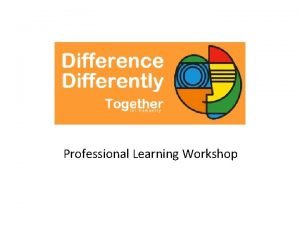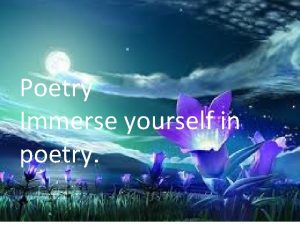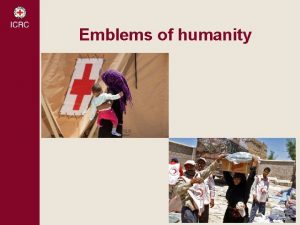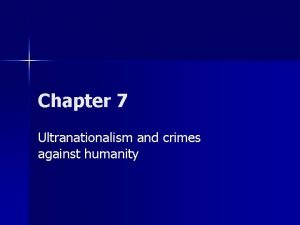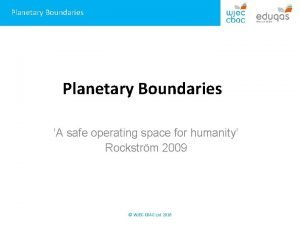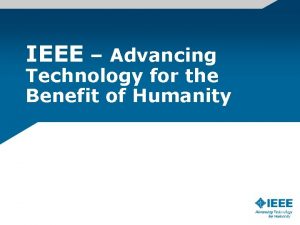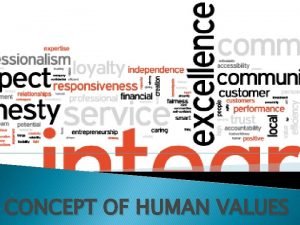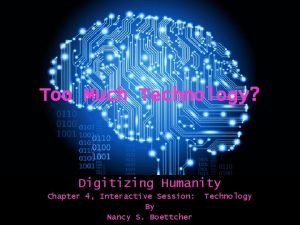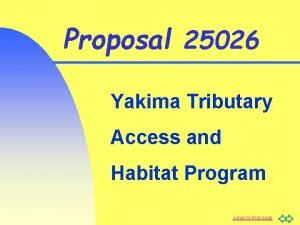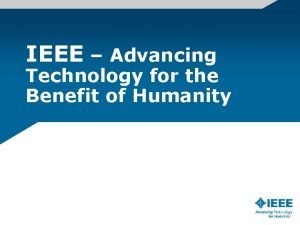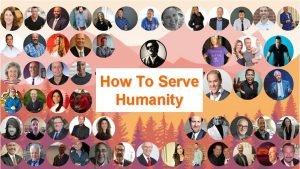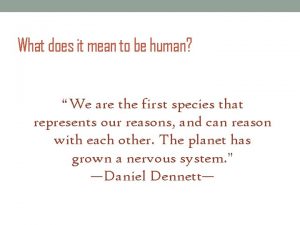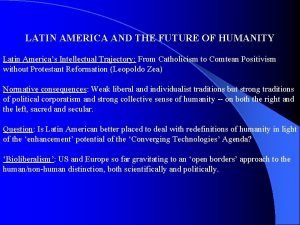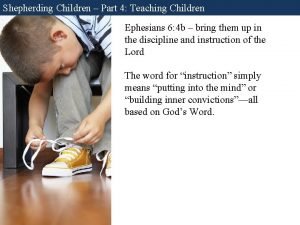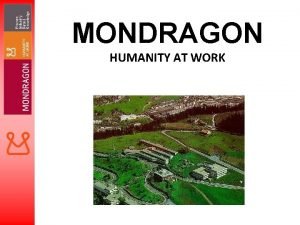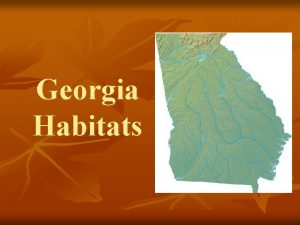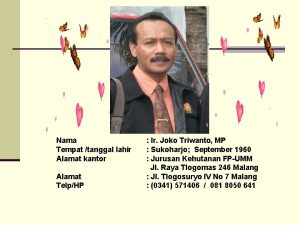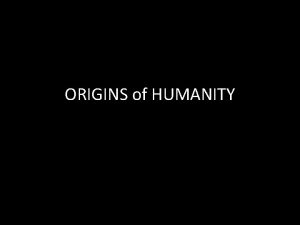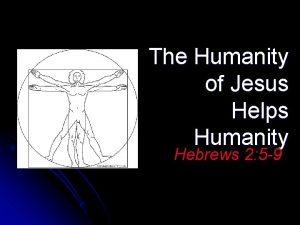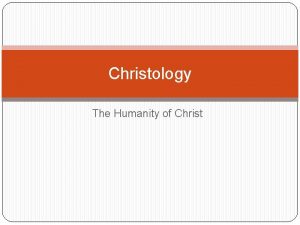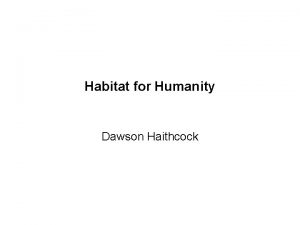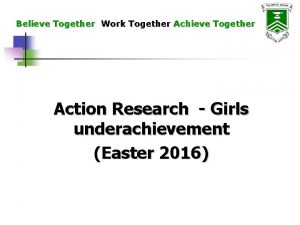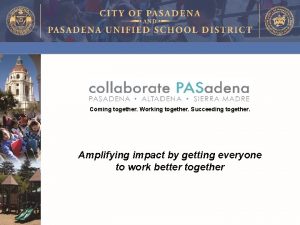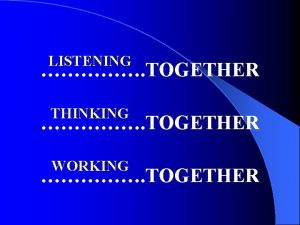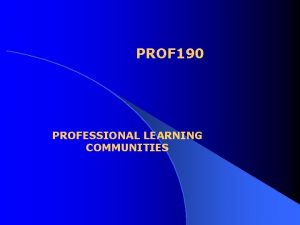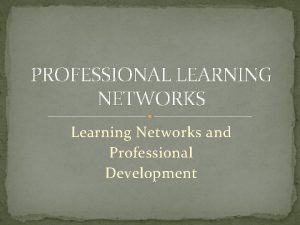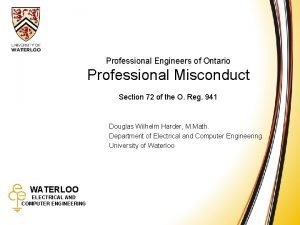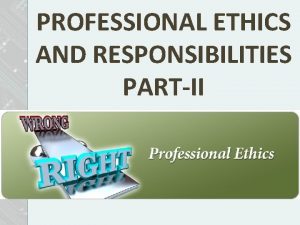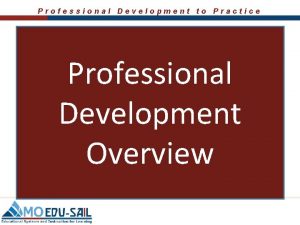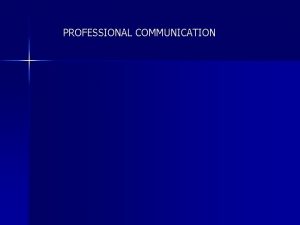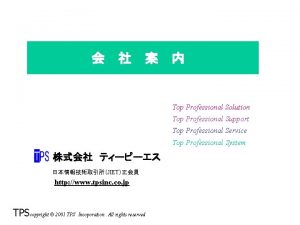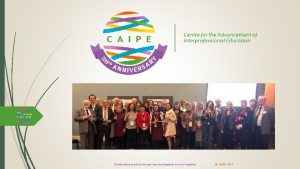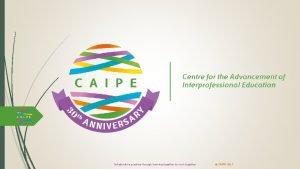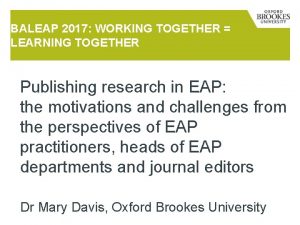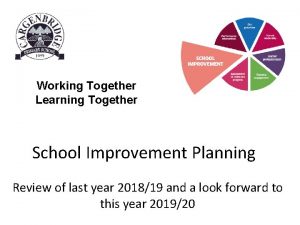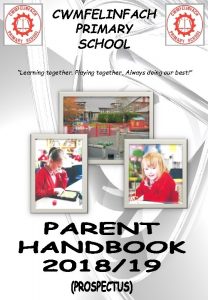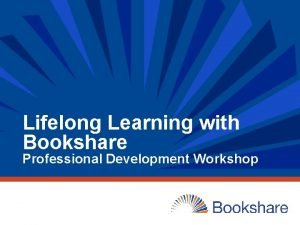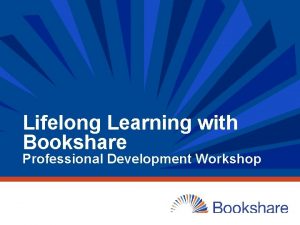Professional Learning Workshop Together for Humanity is a

























































- Slides: 57

Professional Learning Workshop

Together for Humanity is a non-profit organisation facilitating diversity education for adults and students around Australia. It is committed to replacing prejudice with respect, and helping all Australians to understand accept diversity. Difference Differently is funded by the Department of Education, Employment and Workplace Relations.

Difference Differently PL Workshop Diversity and you

Your cultural identity

Share your views on… For me, time is… Children should be treated… I like to work… Marriage is… I deal with conflict by… People in positions of authority should be…

Dealing with diversity video

Difference Differently PL Workshop Why we need diversity education in Australian schools

A snapshot of Australians 27% of Australians were born overseas 16% of Australians speak a language other than English at home 22% of Australians do not identify with a faith 61% identify as Christian 529, 000 Buddhists, 476, 300 Muslims, 275, 500 Hindus, and 97, 300 Jews 10 million Australians have active internet accounts (not inc mobile phones) Australians took 7 million international trips (Between June 2009/June 2010) Source: Australian Bureau of Statistics

Diversity and racism Challenging Racism: The anti racism research project, University of Western Sydney (Data collected between 2001 and 2008) • 27% feel that because of their own ethnic origin they have been called names or similarly insulted • 16. 6% have experienced discrimination because of their own ethnic origin in education • 12. 4% agree they are prejudiced against other cultures • 84. 4% agree there is racial prejudice in Australia • 86. 8% agree it is a good thing for a society to be made up of people from different cultures

Why do we need diversity education? video

The Melbourne Declaration, 2008 Global integration and international mobility have increased in the past decade. As a consequence, new and exciting opportunities for Australians are emerging. This heightens the need to nurture an appreciation of and respect for social, cultural and religious diversity, and a sense of global citizenship… • Ensure that schooling contributes to a socially cohesive society that respects and appreciates cultural, social and religious diversity… • Develop personal values and attributes such as honesty, resilience, empathy and respect for others… • Appreciate Australia’s social, cultural, linguistic and religious diversity… • [Be] able to relate to and communicate across cultures, especially the cultures and countries of Asia

Australian Curriculum General capabilities: • Critical and creative thinking • Ethical behaviour • Personal and social capability • Intercultural understanding Cross curriculum priorities: • Aboriginal and Torres Strait Islander histories and cultures • Asia and Australia’s engagement with Asia • Sustainability

What does intercultural understanding look like? What are the key characteristics?

Dos and don’ts of diversity education • What might this mean? • Why is it important?

Dos and don’ts of diversity education Acknowledge differences within cultural and other groups.

Dos and don’ts of diversity education Explore concepts that are common across cultures.

Dos and don’ts of diversity education Go beyond visible notions of culture.

Dos and don’ts of diversity education Acknowledge and have awareness of your own culture.

Dos and Don’ts of Diversity Education Acknowledge the complexities created by diversity.

Dos and Don’ts of Diversity Education Be prepared to challenge student assumptions and reasoning.

Difference Differently: Teacher resource • Three practical, interactive online modules • Flexible and suitable for all school staff Introducing Diversity Education in the Classroom Whole-School Approaches to Diversity Education

Exploring the Difference Differently student resource

Difference Differently: Student resource • Aligned to of the Australian Curriculum: English, History, Geography and Civics and Citizenship • Four levels: Years 3/4, 5/6, 7/8, and 9/10 • 14 modules (6 primary, 8 secondary) • Flexible • Blended learning approach

Developing intercultural understanding • • Exposure and contact Standpoint and perspective Empathy Media literacy Interpersonal and conflict resolution skills Active citizenship Roleplay, drama and storytelling Reflection

English modules Stories about Difference – Level 1: Years 3/4 • narratives, inclusion and exclusion Ways of Seeing – Level 2: Years 5/6 • Perspective Portraying Australians – Level 3: Years 7/8 • TV, film and advertising, stereotypes Media Madness – Level 4: Years 9/10 • news media, cultural and other groups

History modules Our Communities – Level 1: Years 3/4 • communities, cultural diversity, significant days One Country, Many Cultures – Level 2: Years 5/6 • Indigenous and international migration, contribution of migrants Beliefs, Then and Now – Level 3: Years 7/8 • history and role of religions Who Can Be Australian? – Level 4: Years 9/10

Geography modules Our Communities – Level 1: Years 3/4 • communities, cultural diversity, significant days One Country, Many Cultures – Level 2: Years 5/6 • Indigenous and international migration, contribution of migrants Mapping Diversity – Level 3: Years 7/8 • why people live where they do, locational disadvantage Thinking Globally– Level 4: Years 9/10

Civics and Citizenship modules Getting to Know Others – Level 1: Years 3/4 • meeting people, intercultural communication Many Voices – Level 2: Years 5/6 • varied perspectives, democracy, active citizenship Differing Stories – Level 3: Years 7/8 • discrimination Defining Identities – Level 4: Years 9/10 • personal identity, Australian identity, loyalty

Website

Classroom strategies for developing intercultural understanding

Developing intercultural understanding • • Exposure and contact Standpoint and perspective Empathy Media literacy Interpersonal and conflict resolution skills Active citizenship Roleplay, drama and storytelling Reflection

Exposure and contact • • • Guest speakers Visits to places of worship/cultural significance Interschool programs Use diversity within the school Contact hypothesis Curiosity and questioning

Standpoint and perspective From Years 9/10 Defining Identities module What do you see? What do you think about that? What does it make you wonder? Image courtersy of Cassie Jal

Standpoint and perspective From Years 7/8 Portraying Australians

Standpoint and perspective From Years 7/8 Portraying Australians

Empathy From Student Q and A

Empathy From Student Q and A

Empathy • What is empathy? • Personal stories • Perspective taking exercises (diary entries, creative writing, roleplay)

Media literacy From Years 9/10 Media Madness Headlines Activity

Media literacy From Years 9/10 Media Madness Fill the gap: Ten ____ heroes honoured with pride Daily Telegraph, August 31 2011 a. b. c. d. Muslim Aboriginal Aussie Asian

Media literacy From Years 9/10 Media Madness Ten Aussie heroes honoured with pride Daily Telegraph, August 31 2011

Media literacy From Years 9/10 Media Madness Fill the gap: _____ crime gangs cross the ethnic line Daily Telegraph, 8 Feb 2010 a. b. c. d. Muslim Aussie Asian Gay

Media literacy From Years 9/10 Media Madness Asian crime gangs cross the ethnic line Daily Telegraph, 8 Feb 2010

Media literacy From Years 9/10 Media Madness Fill the gap: ____charged with drink-driving ride-on lawnmower at Ingham Courier Mail, 8 May 2011 a. b. c. d. Teenager Aboriginal Asian Aussie

Media literacy From Years 9/10 Media Madness Teenager charged with drink-driving ride-on lawnmower at Ingham Courier Mail, 8 May 2011

Media literacy From Years 9/10 Media Madness Fill the gap: Call for action on ____ crime Courier Mail, 3 November 2011 a. b. c. d. Gay Aboriginal Asian Teenage

Media literacy From Years 9/10 Media Madness Call for action on Aboriginal crime Courier Mail, 3 November 2011

Interpersonal and conflict resolution skills Jioji Ravulo

Interpersonal and conflict resolution skills From Years 3/4 Getting to Know Others In which country would it be common to see this gesture used to mean come here? a) Russia b) China c) New Zealand d) Mexico

Interpersonal and conflict resolution skills From Years 3/4 Getting to Know Others The correct answer is China. While most Australians call people towards them with their palm facing up, many Asian people gesture for people to come with their palm down.

Interpersonal and Conflict Resolution Skills From Years 3/4 Getting to Know Others In which country would it be common to see this gesture used to mean ‘yes’ or ‘I agree’? a) USA b) Indonesia c) India d) Australia

Interpersonal and conflict resolution skills From Years 3/4 Getting to Know Others The correct answer is India. While most Australians nod their head up and down to say ‘yes’, many Indians nod their head from side to say ‘yes’ or to agree with someone.

Interpersonal and conflict resolution skills From Years 7/8 Beliefs, Then and Now

Active Citizenship • Social connection and responsibility • Opportunity for cross-cultural exposure • Do not reinforce ‘otherness’

Drama, roleplay and storytelling From Years 3/4 Stories About Difference

Reflection and disclosure From Years 9/10 Defining Identities • Self-disclosure and personal stories • Harvard Visible Thinking routines

Difference Differently Contacts www. differencedifferently. edu. au contact@differencedifferently. edu. au 1800 448 345
 Together for humanity
Together for humanity Opvoedbelasting
Opvoedbelasting Cuadro comparativo e-learning b-learning m-learning
Cuadro comparativo e-learning b-learning m-learning How are sandburg's grass and millay's spring similar
How are sandburg's grass and millay's spring similar What are emblems?
What are emblems? How does ultranationalism lead to crimes against humanity
How does ultranationalism lead to crimes against humanity A safe operating space for humanity
A safe operating space for humanity Ieee advancing technology for humanity
Ieee advancing technology for humanity Define human value
Define human value Humanity chapter 4
Humanity chapter 4 Habitat for humanity restore yakima
Habitat for humanity restore yakima Advancing technology for humanity
Advancing technology for humanity How to serve humanity
How to serve humanity About humanity
About humanity Humanity in latin
Humanity in latin Humanity paragraph
Humanity paragraph Gods plan for humanity
Gods plan for humanity Habitat for humanity poland
Habitat for humanity poland Shepherding humanity
Shepherding humanity Mcc
Mcc Ieee advancing technology for humanity
Ieee advancing technology for humanity Georgia habitats animals
Georgia habitats animals Learning to live together,
Learning to live together, Peep programme
Peep programme Iso 22301 utbildning
Iso 22301 utbildning Typiska novell drag
Typiska novell drag Nationell inriktning för artificiell intelligens
Nationell inriktning för artificiell intelligens Ekologiskt fotavtryck
Ekologiskt fotavtryck Shingelfrisyren
Shingelfrisyren En lathund för arbete med kontinuitetshantering
En lathund för arbete med kontinuitetshantering Särskild löneskatt för pensionskostnader
Särskild löneskatt för pensionskostnader Personlig tidbok fylla i
Personlig tidbok fylla i Anatomi organ reproduksi
Anatomi organ reproduksi Vad är densitet
Vad är densitet Datorkunskap för nybörjare
Datorkunskap för nybörjare Boverket ka
Boverket ka Hur skriver man en tes
Hur skriver man en tes Magnetsjukhus
Magnetsjukhus Nyckelkompetenser för livslångt lärande
Nyckelkompetenser för livslångt lärande Påbyggnader för flakfordon
Påbyggnader för flakfordon Arkimedes princip formel
Arkimedes princip formel Offentlig förvaltning
Offentlig förvaltning Jag har gått inunder stjärnor text
Jag har gått inunder stjärnor text Presentera för publik crossboss
Presentera för publik crossboss Argument för teckenspråk som minoritetsspråk
Argument för teckenspråk som minoritetsspråk Bat mitza
Bat mitza Treserva lathund
Treserva lathund Luftstrupen för medicinare
Luftstrupen för medicinare Claes martinsson
Claes martinsson Centrum för kunskap och säkerhet
Centrum för kunskap och säkerhet Lågenergihus nyproduktion
Lågenergihus nyproduktion Mat för unga idrottare
Mat för unga idrottare Verktyg för automatisering av utbetalningar
Verktyg för automatisering av utbetalningar Rutin för avvikelsehantering
Rutin för avvikelsehantering Smärtskolan kunskap för livet
Smärtskolan kunskap för livet Ministerstyre för och nackdelar
Ministerstyre för och nackdelar Tack för att ni har lyssnat
Tack för att ni har lyssnat Vad är referatmarkeringar
Vad är referatmarkeringar
